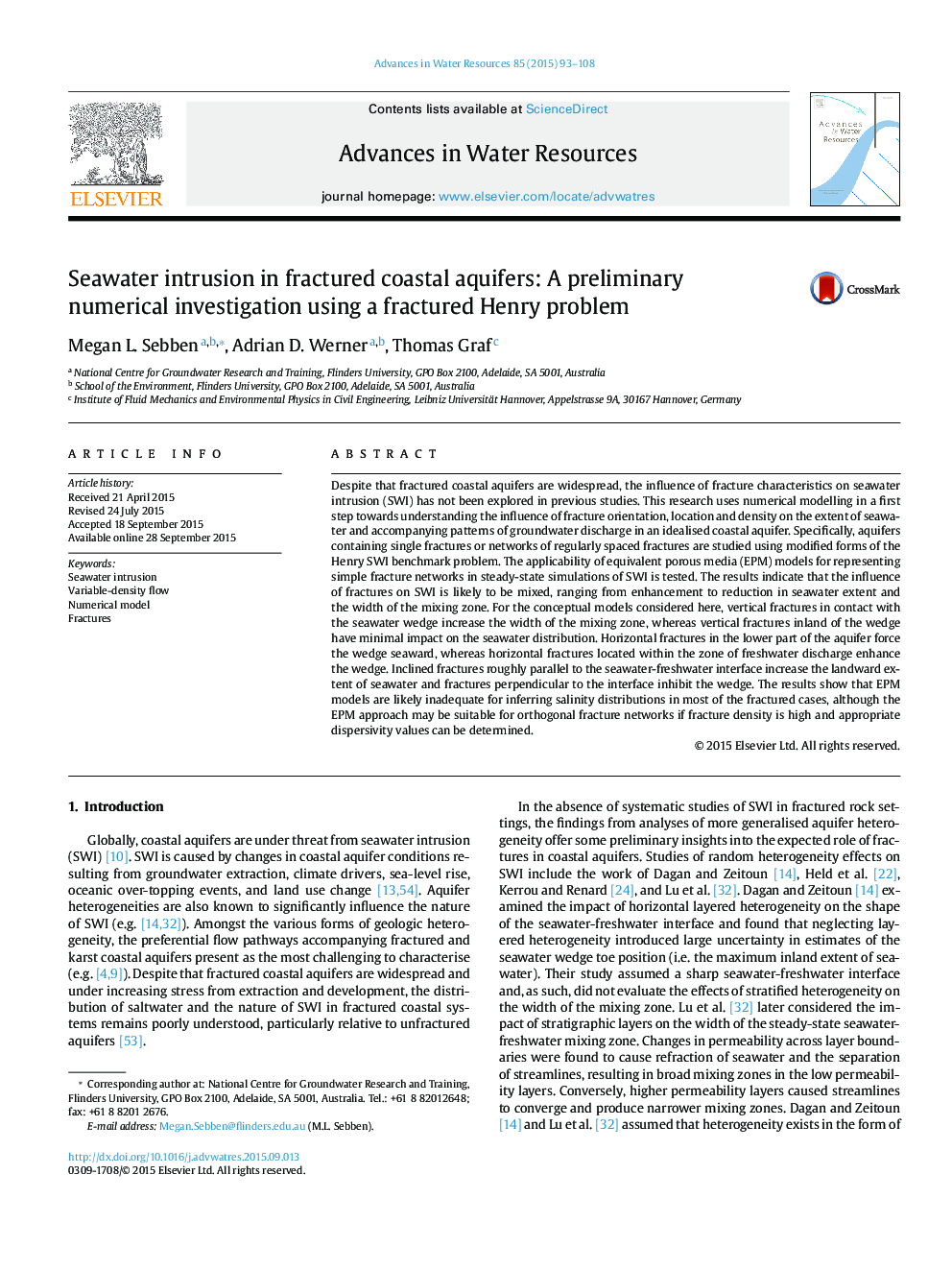| Article ID | Journal | Published Year | Pages | File Type |
|---|---|---|---|---|
| 4525346 | Advances in Water Resources | 2015 | 16 Pages |
•We simulate SWI in simplified, discretely fractured aquifers.•Fracture orientation, location and density can affect seawater extent.•EPM models cannot infer seawater distribution in most discrete fracture cases.
Despite that fractured coastal aquifers are widespread, the influence of fracture characteristics on seawater intrusion (SWI) has not been explored in previous studies. This research uses numerical modelling in a first step towards understanding the influence of fracture orientation, location and density on the extent of seawater and accompanying patterns of groundwater discharge in an idealised coastal aquifer. Specifically, aquifers containing single fractures or networks of regularly spaced fractures are studied using modified forms of the Henry SWI benchmark problem. The applicability of equivalent porous media (EPM) models for representing simple fracture networks in steady-state simulations of SWI is tested. The results indicate that the influence of fractures on SWI is likely to be mixed, ranging from enhancement to reduction in seawater extent and the width of the mixing zone. For the conceptual models considered here, vertical fractures in contact with the seawater wedge increase the width of the mixing zone, whereas vertical fractures inland of the wedge have minimal impact on the seawater distribution. Horizontal fractures in the lower part of the aquifer force the wedge seaward, whereas horizontal fractures located within the zone of freshwater discharge enhance the wedge. Inclined fractures roughly parallel to the seawater-freshwater interface increase the landward extent of seawater and fractures perpendicular to the interface inhibit the wedge. The results show that EPM models are likely inadequate for inferring salinity distributions in most of the fractured cases, although the EPM approach may be suitable for orthogonal fracture networks if fracture density is high and appropriate dispersivity values can be determined.
